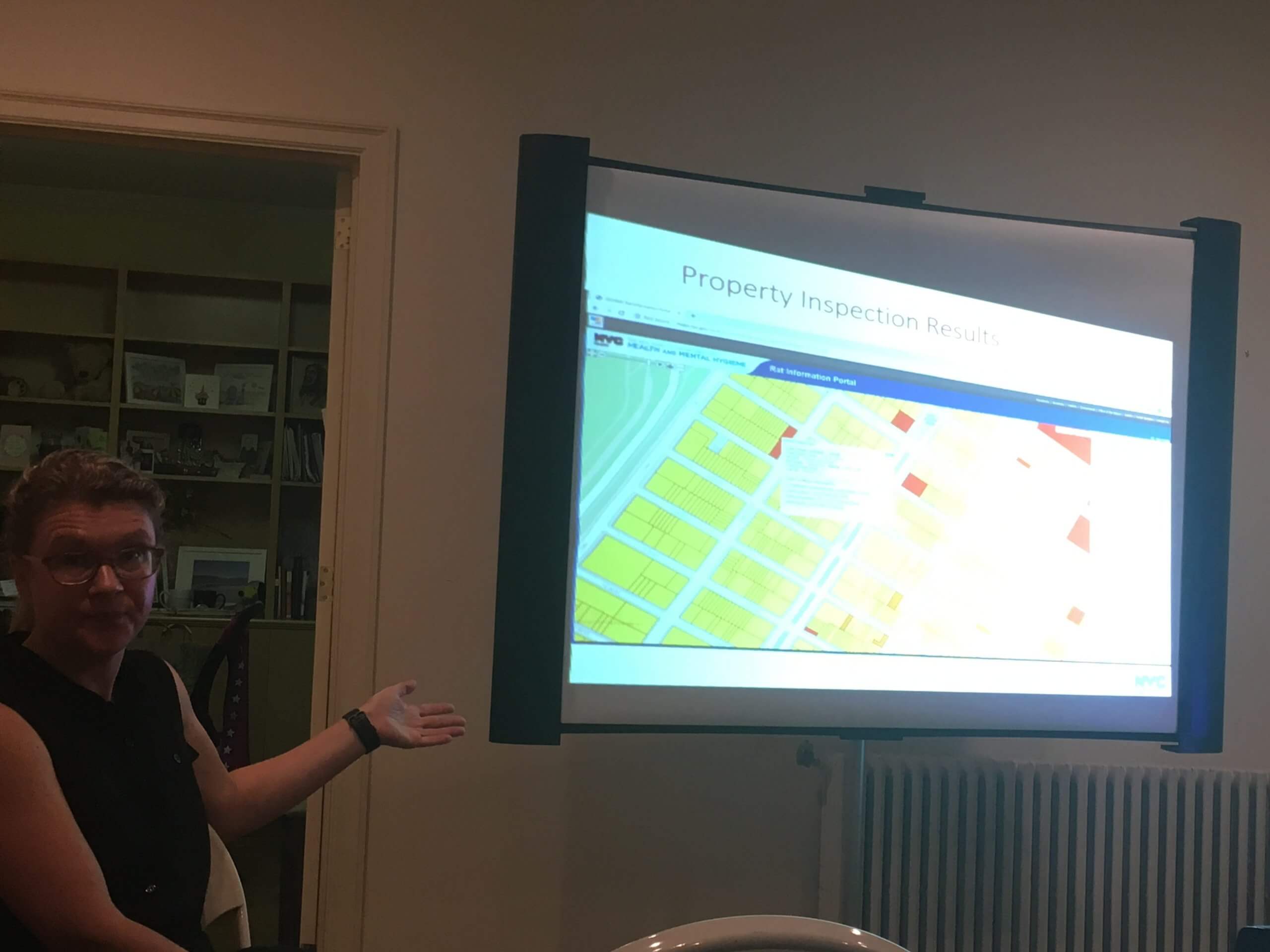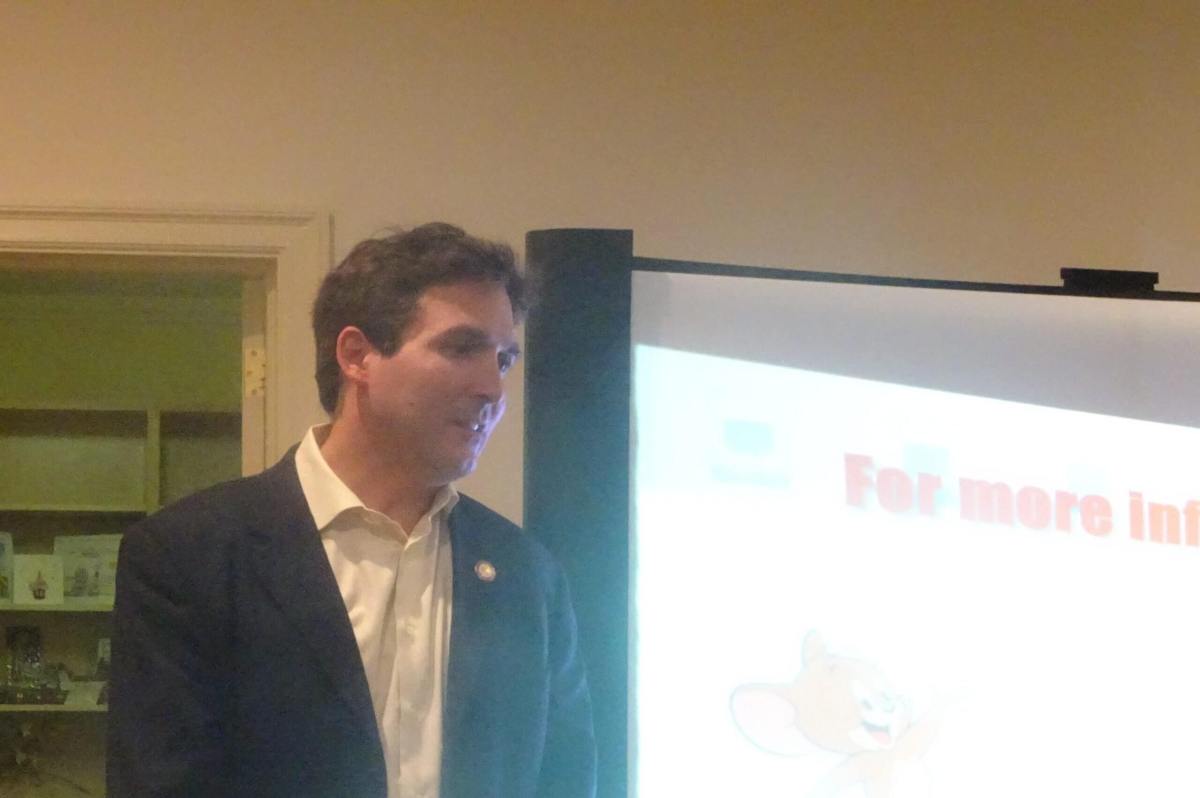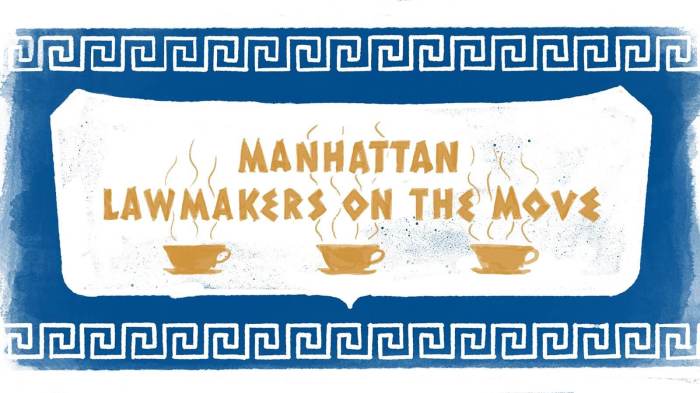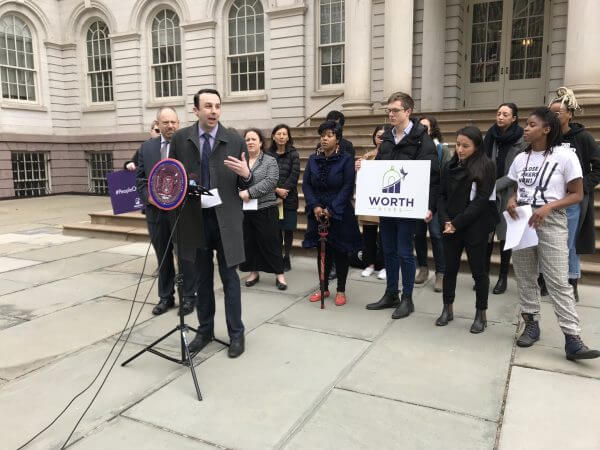What’s the best way to get rid of rats? According to Caroline Bragdon, director of neighborhood interventions and pest control services for the Department of Health, the answer isn’t brute force but firm persuasion.
“What we talk about in neighborhood rat management is controlling them at the places they need to survive,” said Bragdon. “Many times in New York, when we get complaints, people want us to spray them, they want us to bomb them, they want us to nuke the place. But they’re gonna keep coming back unless the conditions that attracted them are removed or addressed.”
Bragdon dispensed this advice at the Summer Rat Academy, an evening information session on neighborhood pest control.
The event took place at St. Frances De Sales Roman Catholic Church, 135 East 96th St. It was hosted by representatives from Carnegie Hill Neighbors and the NYC Department of Health and Mental Hygiene. City Council Member Ben Kallos (D-Yorkville, Lenox Hill, Carnegie Hill) showed up later in the evening.
City Council Member Keith Powers (D-Upper East Side, Carnegie Hill) co-sponsored the event, but could not attend due to a prior commitment, according to his Director of Communication Liz Peters.
It began with a slideshow presentation from Caroline Bragdon, detailing how rats behave and the best ways to send them packing. The bulk of the presentation revolved around prevention, rather than extermination. Most rat prevention involves limiting their access to what she called the “rat triangle” – food, water and shelter. We reduce their access to food and water by securely disposing of trash securely, and to shelter by screening our windows and patching up flaws in our homes’ infrastructure.
Bragdon also offered advice on how to “stress out” the rat population by repeatedly upending their dwelling places. Rats, after having their habitat disrupted multiple times, will eventually learn that they aren’t welcome and relocate.
“We have a stoppage team on staff,” said Bragdon. “What they do is that they’ll use shovels to collapse entire rat nests. This is something that gardeners do, and we have gardeners on staff who do this on a regular basis. That’s stressful; that’s their home. The following night, they’ll have to dig their nest back out again. If you do that six, eight times, that rat is going to learn, ‘This is not the place for me’. They don’t want to do all that work. They’re gonna move.”

Finally, Bragdon detailed the services that the DOH offers. She addressed several complaints about the agency, particularly their slow response time after receiving calls. As she explained, if you call 311 and report an infestation, you won’t necessarily receive a followup call from them; however, this doesn’t mean that they’ve ignored your complaint.
“Our inspectors are going out, they’re doing inspections, but they’re not necessarily announcing themselves,” said Bragdon. “They’re going out, they look for signs of rat activity, they enter that information into our system, and we proceed with enforcement if needed. We get 25 to 30,000 complaints a year; each one is closed with an inspection, as long as we can get access to the property.”
The latter half of the meeting saw an appearance from Ben Kallos. Kallos echoed most of Bragdon’s points, and cited a few of the measures he’s taken since joining the Council. Earlier this month, he invested $135,000 for 194 new trash cans for the Upper East Side. The new receptacles are larger and come with magnet-locked lids that are less prone to spillage.
“The big wire cans led to things falling out of the cans all over our streets,” said Kallos. “We listened to every single corner of my district, and we introduced the covered cans with the lids. They aren’t necessarily rat-proof, but they seems to reduce the population of rats.”
Lo van der Valk, President of Carnegie Hill Neighbors, was overflowing with gratitude for Bragdon and Kallos’ efforts to keep Carnegie Hill pest-free.
“We had a rat presentation three or four years ago, and it left us with a feeling of total hopelessness,” said van der Valk. “And I want to commend you. I think this presentation was beautiful. It was relevant, it was to-the-point, and it was helpful. I don’t know how long you’ve been around, but you’re doing fantastic work.”
For more information, you can visit the Rat Information Portal at www.nyc.gov/rats.



































